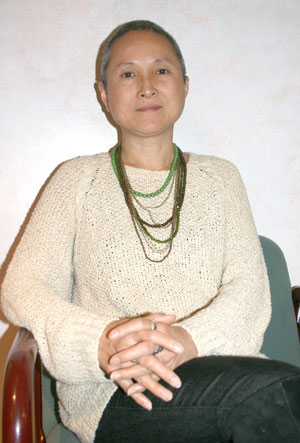 [/media-credit]
[/media-credit]
- Shino Tanikawa
BY ALINE REYNOLDS | Last July, SoHo resident Shino Tanikawa took the helm as president of Community Education Council District Two, which has recently voted down two Downtown rezoning proposals put forth by the city Department of Education. Tanikawa, discusses her role as C.E.C. District Two president and explains why she opposed the city’s latest rezoning plan.
So, how long have you been a part of Community Education Council District Two? Why did you want to be president?
I was first appointed in March 2009. It was a special appointment by the C.E.C., which is distinctly different from the appointed positions by the Manhattan Borough President in that candidates submit an application and the [C.E.C.] serving members review it. I became president because I thought I might be able to contribute better if I was in a leadership position. Half the C.E.C. were newly elected members last summer, and I know some of the returning members have a busier schedule and weren’t keen on taking the leadership role, anyway. So I said, ‘OK, I’ll do it.’
What’s your job as president?
I ensure my Council functions well by facilitating communication and collaboration among members. More mundanely, I preside over our meetings and supervise our administrative assistant.
Talk about the D.O.E.’s rezoning tactics, and why this year’s proposals haven’t appeased Downtown families thus far.
The problem with the D.O.E.’s approach to rezoning is they use current kindergarten [enrollment numbers] to draw the lines. That assumes that, next year, we’ll have the same kindergarteners coming in from the same exact locations, and we know that’s not true. In some areas, the number of kids coming in is increasing. Also, [the proposals] didn’t really respond to what community members were telling us, which was that they would rather have a chance to attend the school of their choice, like P.S. 234, than be entirely zoned out.
What was your qualm with the latest rezoning proposal?
We didn’t feel what the D.O.E. was proposing was a viable solution. The proposed zones for P.S. 234 and P.S. 397 cut [the schools’ current zones] into three different schools. I think that’s very disruptive – especially for 397, which is still a new school and in the process of building a school community. You don’t want to go in there and chop it up into three different pieces.
What do you think of the D.O.E.’s enrollment projection methods?
The [Department of Education’s] Blue Book is notoriously wrong: When it says the capacity is at 80-something percent, my inclination is that’s probably a good capacity for that school, as exemplified by P.S. 1. When the Blue Book says [capacity is at] 100 percent, that’s probably the beginning of some serious overcrowding problem.
Is rezoning an antidote to overcrowding?
Absolutely not. You don’t have to be rocket scientist to know rezoning doesn’t create new seats and that it just shifts seats around. Lower Manhattan doesn’t have any seats anywhere. It’s one thing if you have a school that’s only half full right next to a school that’s 150% capacity: Then you might consider shifting the line. By in large in District Two, I can’t think of a neighborhood that’s like that.
As a P.S. 3 parent, you have a personal stake in the rezoning proposal for the West Village schools?
My daughter is a fourth grader at P.S. 3 and is looking at only another year there, so it doesn’t affect me personally at all. Also, if the split-zone happens [in the Village] and the school’s character changes as a result of that, those changes take time – they don’t happen overnight.
Does P.S. 3 also face overcrowding?
Yes, our class sizes are big. Like the Downtown schools, P.S. 3 is bottom-heavy, meaning that we have more students in the younger grades than in fifth grade, the graduating class. There’s attrition, but not that much.


































